How to use the Proton Drive desktop app for Windows
The Proton Drive app for Windows makes it easy to sync files while working directly in your File Explorer — especially on trusted computers you use regularly, like at home or at the office. Unlike the web app, which is more suited for occasional access, the desktop app runs in the background and keeps your files backed up automatically as you work.
To get started, you’ll need a Proton Account.
How to install Proton Drive on Windows
- Go to the Proton Drive download page.
- Click Download for Windows.

- From the dropdown menu, select:
- Windows 11/10 (x64) for Intel or AMD processors
- Windows 11/10 (ARM64) for ARM processors
- If you’re unsure, go to Settings → System → About and check under Device specifications.
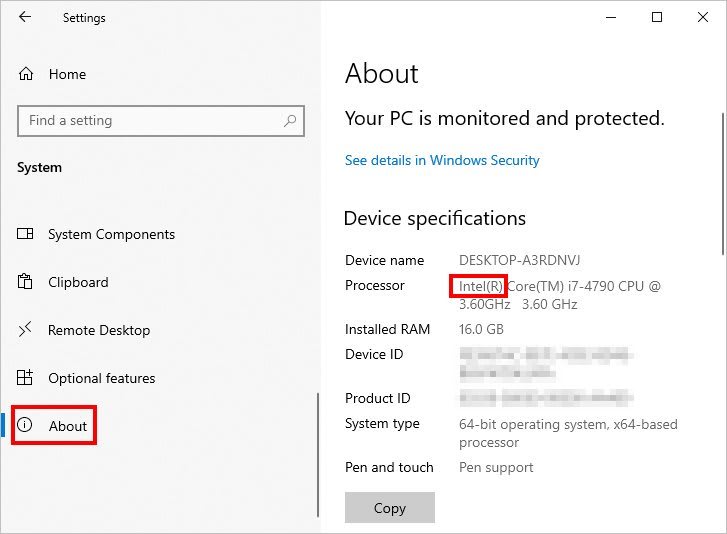
- Once downloaded, open the .EXE file and follow the on-screen instructions.
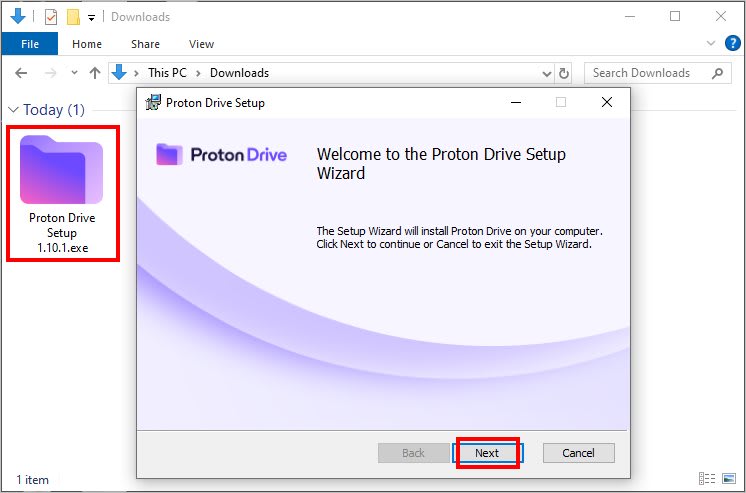
- The app will install quickly and then prompt you to sign in with your Proton Account.

- After the initial login, Proton Drive offers to back up your folders to the cloud, so you can set your preferences and click Continue.
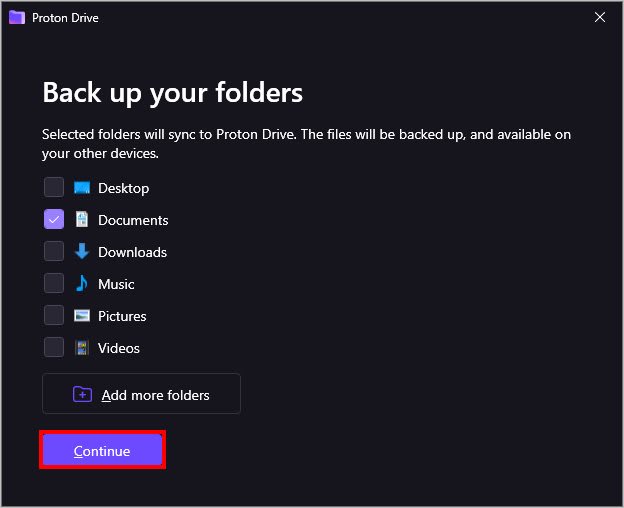
- Next, you can set your default location for accessing synced files. Click Finish setup when you’re done.
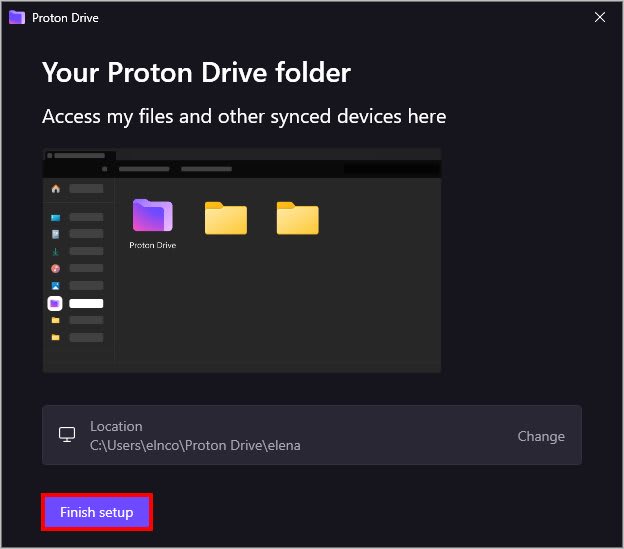
The app starts automatically with your computer by default.
App overview
You can interact with Proton Drive through the desktop app window, system tray icon, and Proton Drive folder in your File Explorer.
Desktop app window
The main window includes a navigation menu on the left and file activity of settings on the right, depending on what you select. Here’s what each section in the navigation menu does:
- Activity: See real-time file sync progress, including uploads, downloads, file size, sync time, device location, and any sync errors.
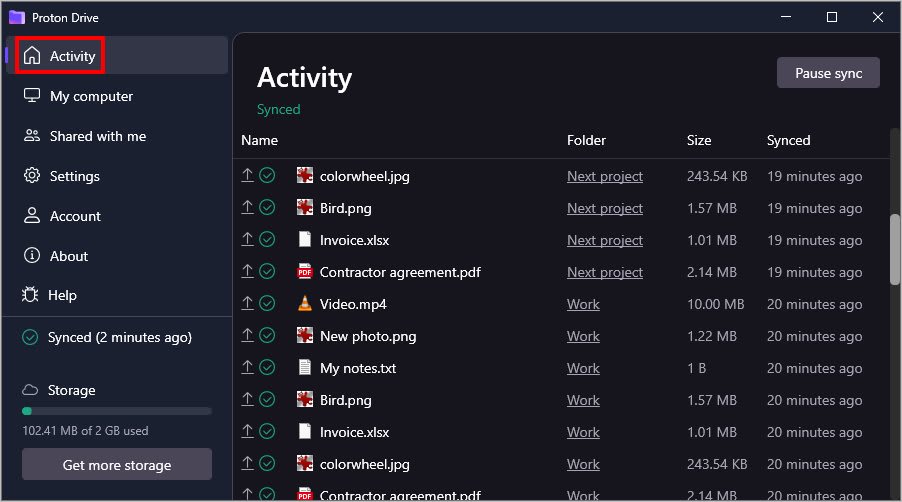
- My computer: Rename your device (helps identify it on other devices), manage sync folders, and enable the Optimize storage setting to automatically manage local space.
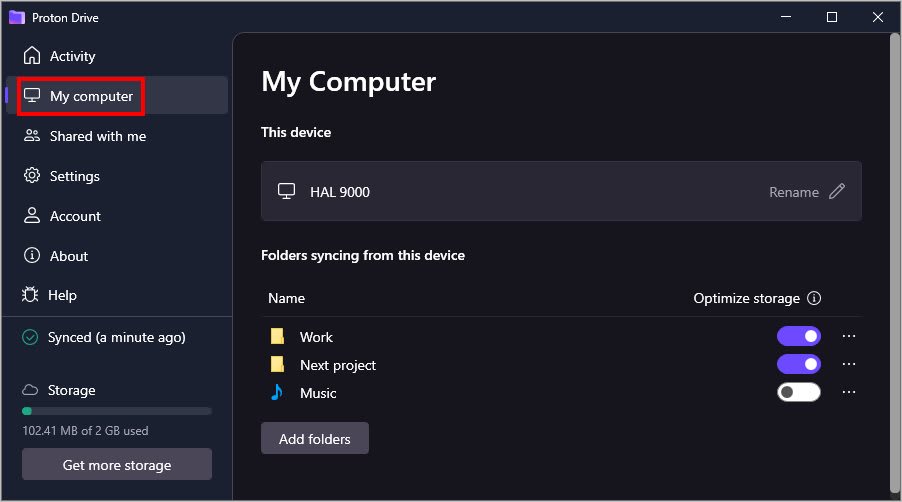
- Shared with me: Access files and folders that others have shared with you.
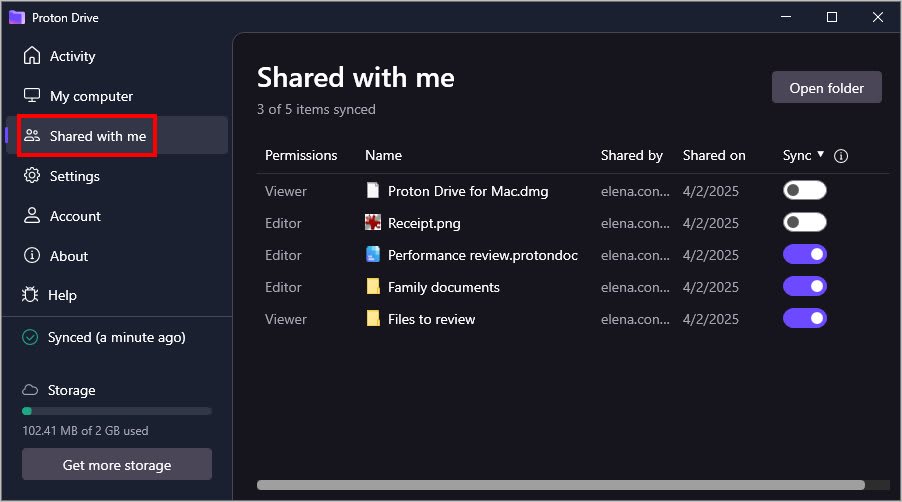
- Settings: Change the Proton Drive folder, startup behavior, and language.
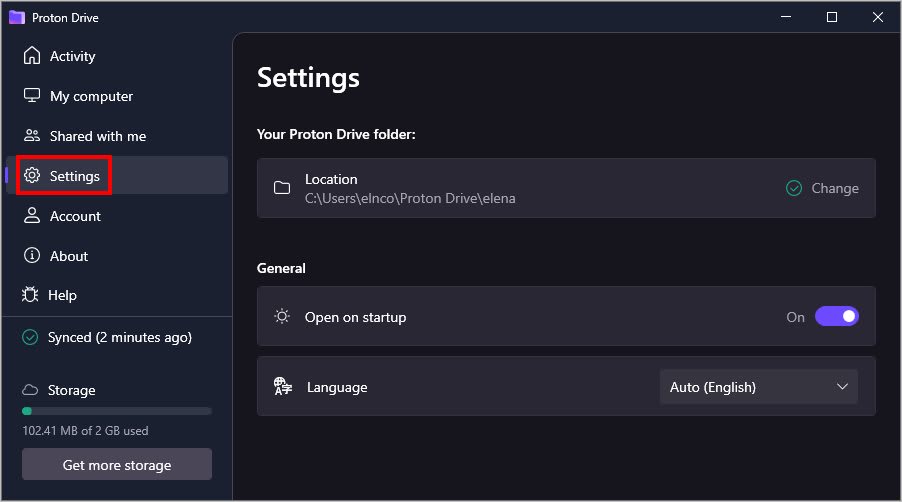
- Account: Check your storage capacity, open Proton Account settings, or sign out.
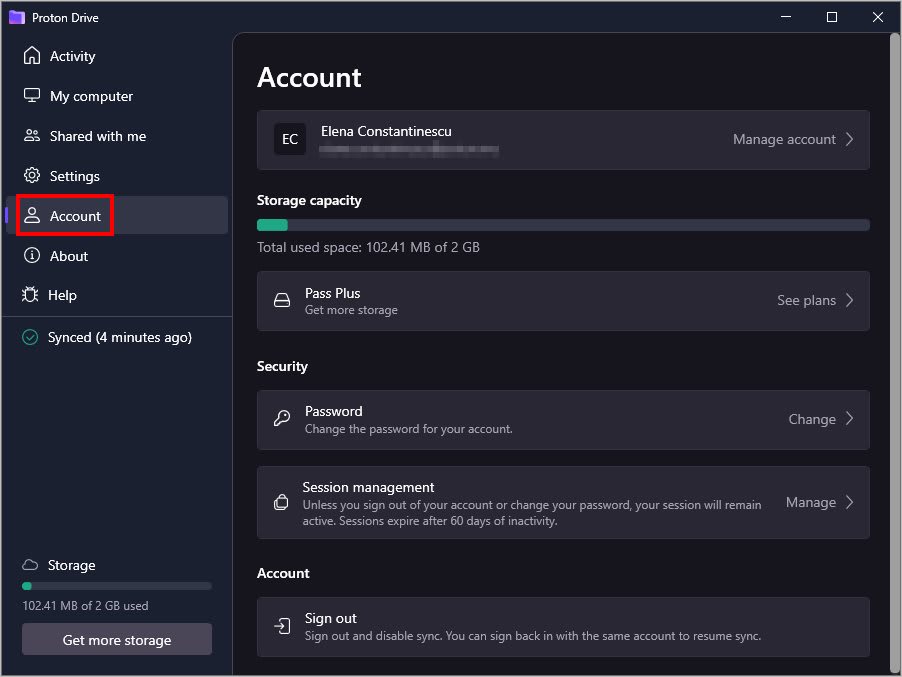
- About: Check for app updates, view release notes, and access our Terms of service and Privacy policy.

- Help: Report problems to Support via email and open your logs folder in your File Explorer.
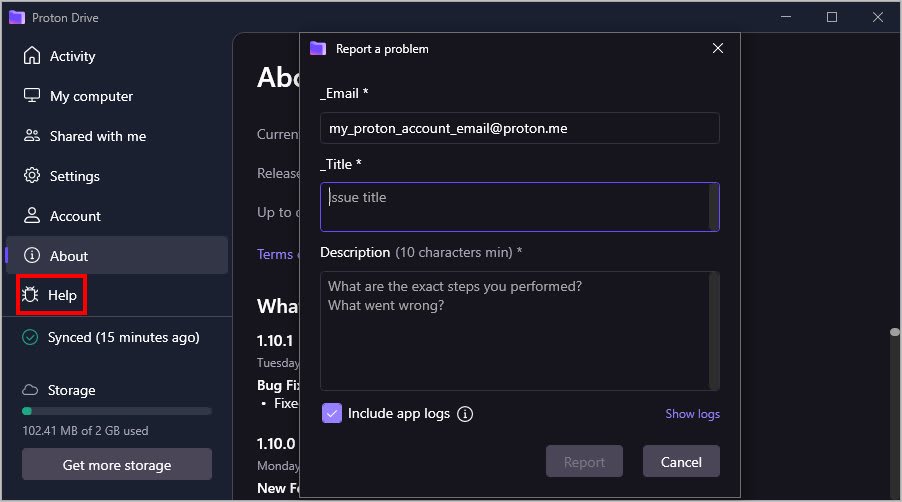
You can always see your current storage usage at the bottom-left corner of the app.
System tray icon
The Proton Drive icon lives in your Windows system tray (bottom-right corner).
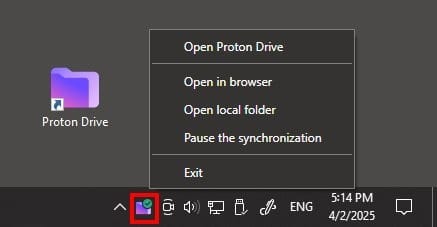
You can:
- Hover to check the sync status (e.g. Synced, Synchronization paused).
- Double-click to bring up the main window.
- Right-click for quick options:
- Open Proton Drive (same as double-click)
- Open in browser (launches your Drive account(new window))
- Open local folder (in your File Explorer)
- Pause the synchronization
- Exit (closes the app but does not log you out)
Proton Drive folder
You can easily access your Proton Drive folder from:
- The system tray menu.
- File Explorer → top of the navigation pane under Quick access.
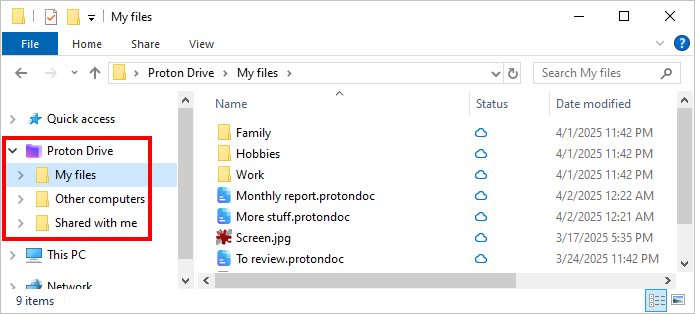
This folder behaves like any normal folder but with cloud sync and end-to-end encryption.
Understanding the Proton Drive folder layout
- By default, synced files are stored in the My files folder.
- You can’t create folders in the root of Proton Drive, but you can organize files by creating subfolders within My files.
- If you’re syncing multiple devices, each additional one will appear under Other computers (up to 10).
- Files and folders shared with you appear in the Shared with me folder.
- Each file or folder displays a sync icon, depending on their status.
How to uninstall the Proton Drive Windows app
- Right-click the Start button and choose Apps and Features.
- Find Proton Drive in the list, click Uninstall, then confirm.

- Follow the on-screen steps to remove the app. You can choose to keep your app data and preferences if you plan to reinstall it later.
